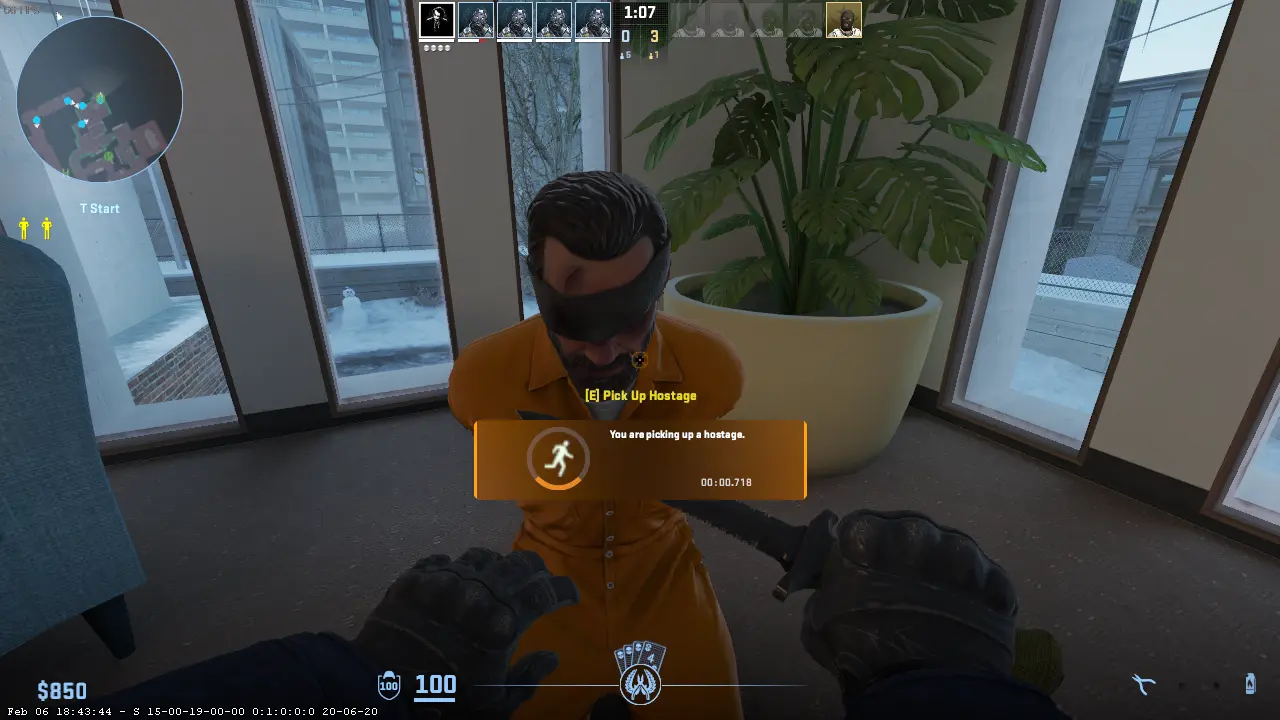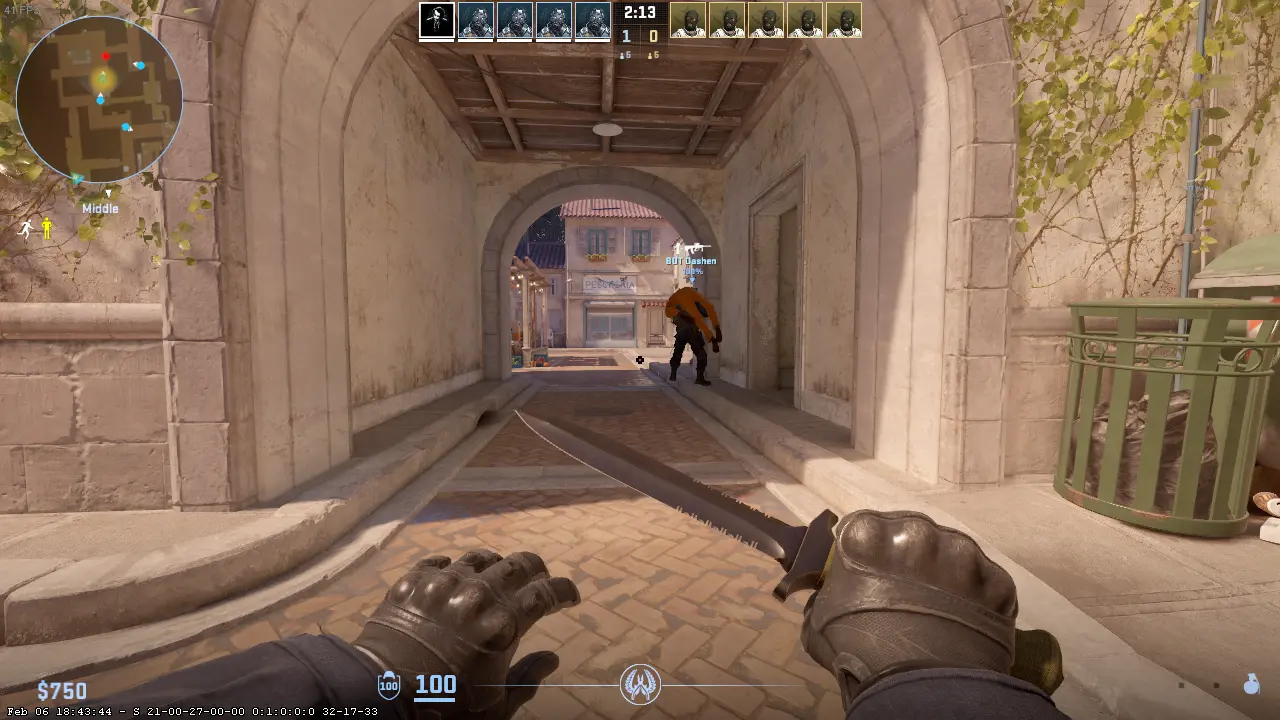
In the adrenaline-fueled world of Counter-Strike 2, the Hostage Rescue mode stands out as a thrilling alternative to the classic bomb defusal scenarios. This mode not only tests your shooting skills but also demands strategic thinking and team coordination. Whether you're new to the game or looking to refine your tactics, this guide delves into the intricacies of CS2 hostage situation tactics, offering essential tips and strategies to enhance your gameplay.
Understanding hostage rescue in CS2
Hostage Rescue in CS2 is a high-stakes game mode where Counter-Terrorists (CTs) are tasked with rescuing hostages held by the Terrorists (Ts). The mode flips the traditional CS objective on its head, with CTs playing the offensive role to penetrate T defenses and safely escort hostages to a designated rescue zone. Success in this mode hinges on mastering how to play hostage rescue in CS2, which involves a deep understanding of map layouts, hostage positions, and optimal rescue paths.

Each round begins with hostages located in T-controlled territory, requiring CTs to strategize their approach carefully. The CS2 hostage rescue guide emphasizes the importance of stealth, speed, and precision, as CTs must navigate the map, eliminate threats, and secure hostages without falling into T ambushes. Conversely, Ts must employ effective area denial and delay tactics to prevent hostage rescue within the round's time limit, making each match a tense battle of wits and reflexes.
Essential hostage mode tactics in CS2
Succeeding in CS2 hostage rescue mode requires a solid grasp of fundamental tactics. Here are some essential strategies:
- Map knowledge: Familiarize yourself with every nook and cranny of hostage maps. Knowing the quickest routes for rescue and potential hiding spots for enemies is crucial.
- Communication: Effective team coordination can make or break a rescue mission. Always communicate your plans, hostage status, and enemy positions with your team.
- Utility usage: Smoke grenades and flashbangs are invaluable for obscuring movements and disorienting enemies during a rescue attempt. Use them wisely to cover your tracks and blind spots.
- Hostage control: Practice moving with hostages. Their slower pace can affect your escape strategy, so it's important to secure safe routes before initiating a rescue.
Adhering to these hostage mode tactics CS2 lays the groundwork for successful rescues and forms the basis for more complex strategies.


Advanced strategies for mastering hostage mode
Once you've got the basics down, elevate your game with these advanced tactics:
- Psychological warfare: Use decoys and feints to mislead opponents about your intended rescue path. Creating uncertainty can force terrorists to spread their defences thin.
- Time management: Use the round timer to your advantage. A well-timed push in the dying seconds can catch terrorists off guard, as they might not expect a late rescue attempt.
- Hostage rotation: In scenarios with multiple hostages, consider feigning a rescue with one to draw enemies out, then quickly switching to another hostage for the actual rescue.
- Counter-utility play: Anticipate terrorist utility usage and counter it with your own. For example, a well-placed smoke can negate a Molotov, clearing a path for rescue.
Employing these advanced tactics in CS2 hostage rescue can significantly enhance your effectiveness in Hostage Rescue mode, turning challenging situations into winnable rounds.
Hostage rescue tips and tricks
To excel in CS2 hostage rescue mode, consider these practical tips and tricks that can give you an edge:
- Silent hostage pick-up: Approach hostages silently by walking to avoid alerting nearby terrorists. The element of surprise is critical in safely securing hostages.
- Pre-rescue clears: Before attempting a rescue, clear common hiding spots and angles where enemies might lurk. Ensuring the path is safe is crucial for a successful extraction.
- Hostage as a decoy: In some situations, initiating a hostage pick-up can serve as a decoy to draw out enemies, allowing your teammates to pinpoint their locations.
- Quick switch: Learn to quickly switch between your weapon and the hostage. This skill is vital for defending against unexpected enemy engagements during a rescue.
Applying these hostage rescue tips and tricks can significantly improve your play, making each rescue attempt more strategic and less risky.

Key сonsiderations for successful hostage rescue
For a successful hostage rescue operation in CS2, keep these key considerations in mind:
- Team composition: Balance your team with roles suited for entry, support, and sniping. A well-rounded team can adapt to various scenarios encountered in hostage rescue.
- Economy management: Investing in the right equipment without jeopardizing your team's economy is essential. Sometimes, saving for a full-buy round can be more strategic than forcing a suboptimal rescue attempt.
- Hostage positioning: Be mindful of hostage positioning at the start of each round. Planning your approach based on their locations can lead to more effective rescue strategies.
- Adaptability: Be prepared to adapt your CS2 strategy for hostage rescue mid-round based on enemy movements and actions. Flexibility in response to the dynamic nature of hostage situations is often the key to rescue hostages in Counter-Strike.
Mastering these considerations and integrating them into your gameplay will enhance your ability to lead successful rescues and contribute significantly to your team's victories in CS2 hostage rescue mode.


For beginners: getting started with hostage rescue
Diving into playing hostage mode in CS2 can be an exciting venture for beginners. It's a game mode that tests not just your aim but your strategic acumen. To get started:
- Understand the objective: The core of hostage mode revolves around either rescuing hostages or preventing their rescue. Grasping this fundamental objective is crucial.
- Map familiarity: Spend time learning the layout of hostage maps. Knowing the ins and outs can dramatically improve your chances of success.
- Practice makes perfect: Use offline modes or less competitive environments to hone your skills. This practice is essential for CS2 hostage mode for beginners, providing a safe space to experiment with different tactics.
- Watch and learn: Observe experienced players through streams or replays. Note their positioning, decision-making, and how they handle hostage situations.
Starting with these steps will build a solid foundation, making the transition to competitive play smoother and more enjoyable.
Winning strategies for CS2 hostage mode
Achieving success in hostage mode requires more than just quick reflexes. Winning strategies for CS2 hostage involve a blend of smart decision-making, team coordination, and timely execution of plans. Here are some strategies to consider:
- Control key areas: Dominating crucial parts of the map can give your team a strategic advantage, whether it's for easier hostage access or for setting up defences.
- Adapt and react: Be ready to change your tactics based on the flow of the game. Adaptability is a key component of counter-strike 2 gameplay tactics.
- Strategic utility placement: Beyond basic utility usage, learn to place smokes and flashes strategically to create safe passages for hostage retrieval or to stall enemy advances.
- Post-rescue positioning: Once a hostage is secured, choose your escape route wisely. Consider the least expected paths and always be ready for enemy encounters.
Integrating these strategies into your gameplay will not only improve your success rate in hostage rescue but also contribute to your overall growth as a CS2 player.


Conclusion
Playing hostage mode in CS2 offers a refreshing break from the usual bomb scenarios, introducing players to a different facet of counter-strike 2 gameplay tactics. For those new to this mode, remember that CS2 hostage mode for beginners is all about gradual improvement and learning from each round. By applying the winning strategies for CS2 hostage and continuously refining your approach, you'll not only enjoy the game more but also contribute significantly to your team's efforts.







No comments yet! Be the first one to react